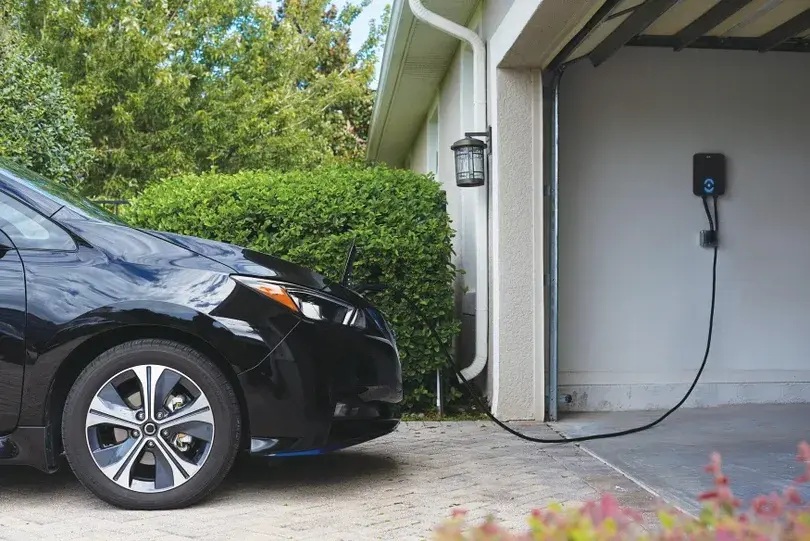Introduction
As a leading EV charger manufacturer in China, LiCB Charge delivers reliable AC and DC electric vehicle charging stations along with comprehensive charging solutions.
As electric vehicles (EVs) become more popular, many homeowners and businesses consider installing Level 2 charging stations. A common question is: How many amps does a Level 2 charger require? Understanding amperage is crucial because it affects charging speed, electrical load, installation cost, and safety.
This article explains what amps mean in EV charging, how to choose the right amp rating for your needs, and important installation considerations for both home and commercial settings.
What Are Amps and Why Do They Matter?
Amps (amperes) measure electrical current flow—think of electricity like water flowing through a pipe: volts are water pressure, amps are the flow rate, and watts (power) equal the product of volts and amps.
For EV chargers, amperage indicates how much current the charger supplies to your car’s battery. Higher amps generally mean faster charging—if your vehicle can handle it. But higher current also means a bigger load on your electrical system, so balance is key.
Level 2 EV Charging Basics
Level 2 chargers run at 240 volts, twice the voltage of standard outlets, and deliver between 15 and 80 amps. Portable models typically max out around 32 amps, while hardwired units can provide up to 80 amps.
For context, Level 1 chargers use 120 volts and 12–16 amps, resulting in much slower charging.
How Fast is Level 2 Charging?
Power output ranges from about 3.3 kW to 17.2 kW, depending on amps and volts, translating to roughly 10–52 miles of range per hour of charging.
- 16-amp charger: ~3.8 kW, adds ~12-15 miles per hour
- 40-amp charger: ~9.6 kW, adds ~30 miles per hour
- 80-amp charger: ~17.2 kW, adds maximum speed for compatible EVs
Actual charging speed depends on your car’s onboard charger limits.
Choosing the Right Amp Rating
- Know Your EV’s Maximum Charging Capacity
- Check your vehicle’s specs. Many EVs accept 32–40 amps max, so an 80-amp charger won’t charge them faster.
- Consider Your Driving Habits
- Short daily trips may only need a lower-amp charger (16 or 24 amps). Longer commutes or multiple EVs benefit from higher amps (32 or 40 amps) for quicker turnaround.
- Assess Your Electrical System Capacity
- Level 2 chargers need a dedicated 240V circuit. The National Electrical Code (NEC) recommends continuous loads use no more than 80% of circuit capacity. For example:
- 40-amp charger → 50-amp circuit breaker
- 80-amp charger → 100-amp circuit breaker
Hire a licensed electrician to evaluate your panel and handle installation.
Example: Charging Speed Calculation
- Charger: 32 amps × 240 volts = 7.7 kW
- Miles added per hour: ~25 (varies by vehicle)
If you drive 50 miles daily, a 32-amp charger can fully recharge your battery in about 2 hours. A 16-amp charger would take roughly twice as long.
Installation Requirements
Home Installation:
- Dedicated 240V circuit, often via NEMA 14-50 outlet or hardwired
- Indoor installations last longer; outdoor units need weatherproof ratings
- May require panel upgrades or subpanels
Commercial Installation:
- Assess capacity for multiple chargers running simultaneously
- Plan for future expansion (extra conduit, panel space)
- Use load management software for safe power distribution
- Coordinate with utilities for demand charges and rebates
Electrical Codes and Safety
Comply with local codes and NEC: proper wire sizing, circuit breakers, GFCI protection for outdoor outlets, and weatherproof enclosures. Improper installation risks fire hazards and can void warranties.
Future-Proofing Your Setup
Installing a higher-capacity circuit now (e.g., 50 amps) lets you start with a lower-amp charger and easily upgrade later without rewiring, saving money and hassle.
Costs and Considerations
Higher amps mean heavier gauge wiring, bigger breakers, and possibly panel upgrades—adding to installation costs. Get multiple electrician quotes and check for utility incentives or tax credits.
Key Takeaways
- Amps measure electrical current flow and affect charging speed.
- Level 2 chargers deliver 15–80 amps, providing 10–52 miles of range per hour.
- Match amp rating to your EV’s capability, driving needs, and electrical system.
- Always use a licensed electrician to ensure safe, code-compliant installation.
- Consider future needs when planning your circuit capacity.
Conclusion
A Level 2 EV charger makes owning an electric vehicle more practical by speeding up charging times safely and efficiently. Understanding amps, your vehicle’s requirements, and your electrical system’s capacity will help you make informed decisions that balance cost, convenience, and safety.
Consult with electricians and utilities to ensure your setup is ready for today’s needs and tomorrow’s upgrades—helping you enjoy fast, reliable charging for years to come. Learn more about Google SEO.





Comments